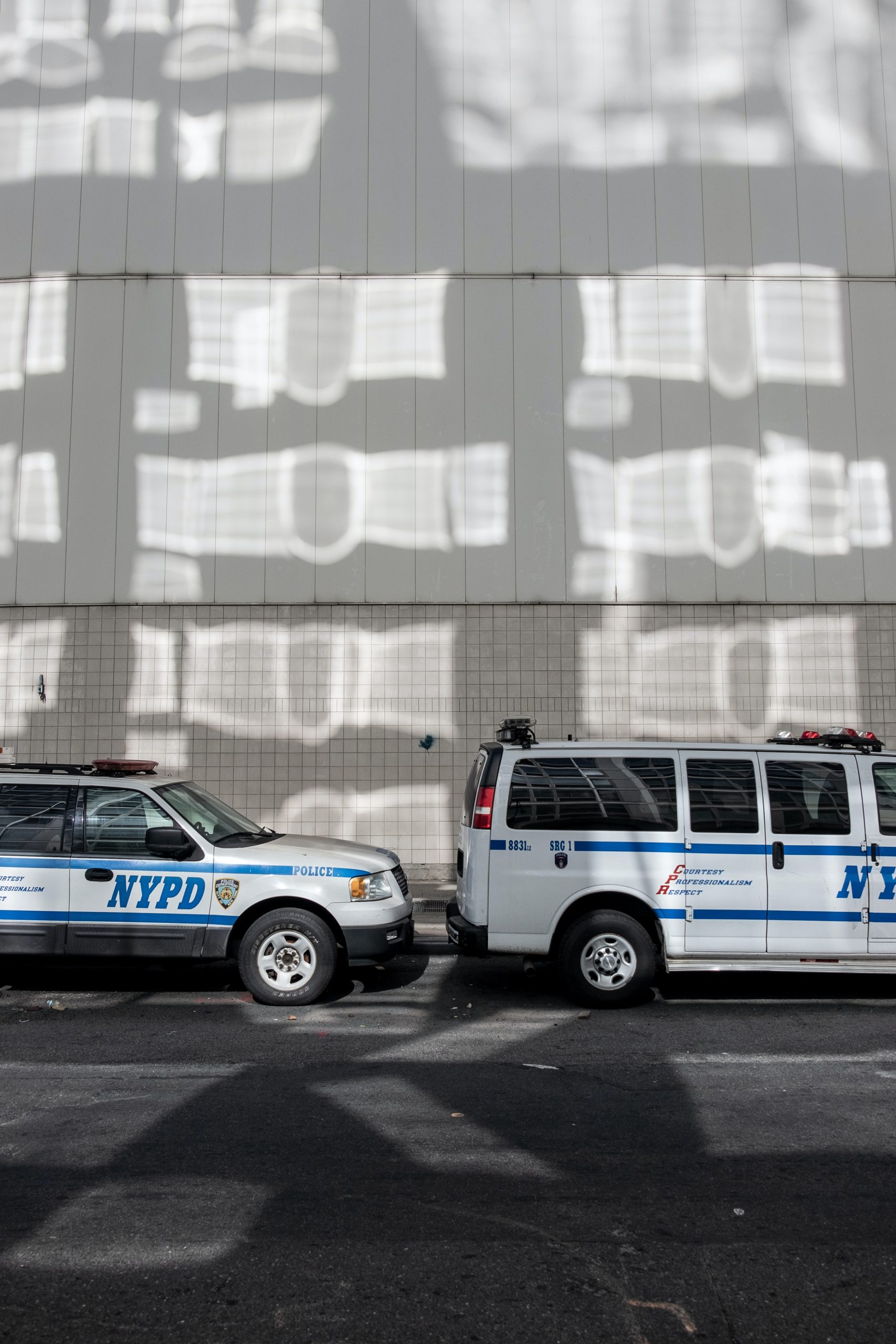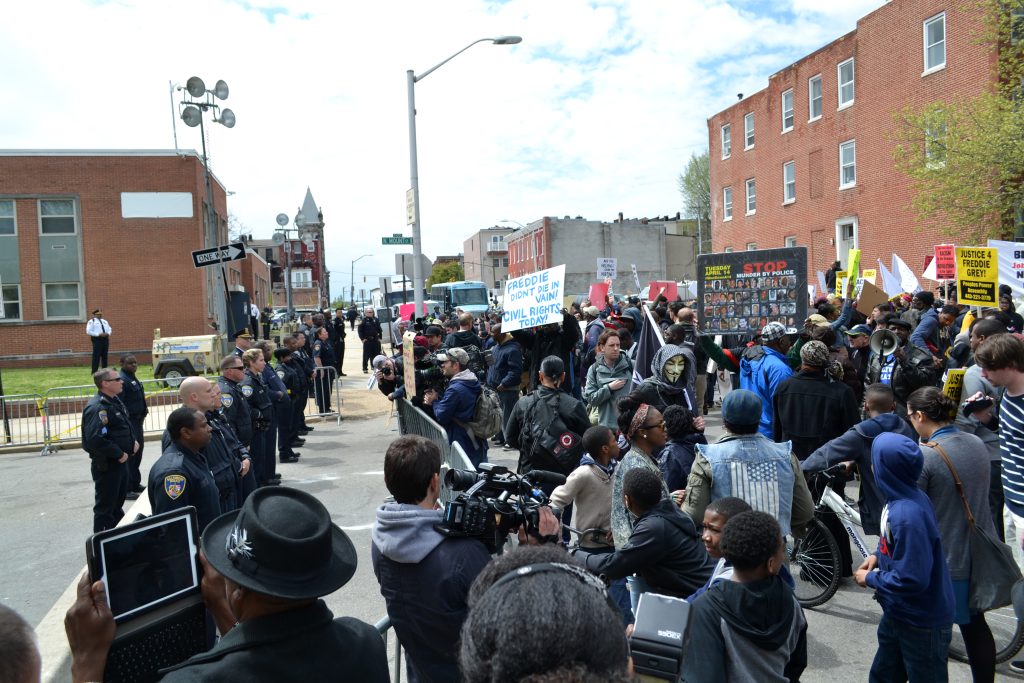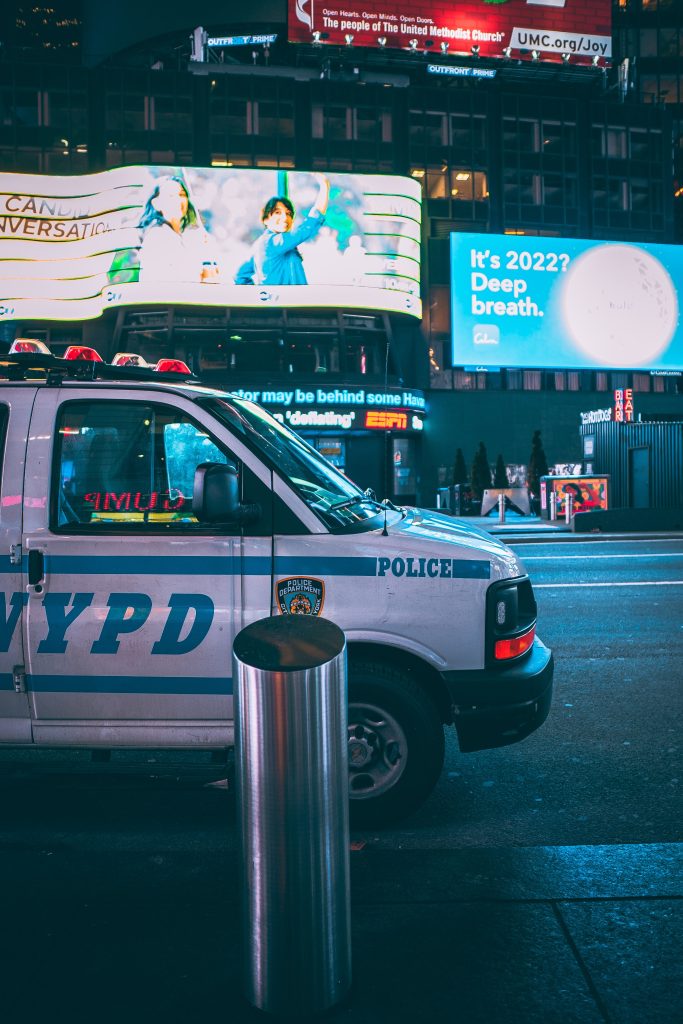
17 Aug The Roughest Ride of Your Life: A Tortuous Story of Custodial Transport
On June 19, police in New Haven, Connecticut, received a report of someone in possession of a firearm at a block party on Lilac Street, in the city’s Newhallville section. Police arrived at the party, a celebration of Father’s Day and Juneteenth, and found 36-year-old Randy Cox helping at the grill. And he had a firearm in his waistband.
Because Cox has a record that includes several assault-related misdemeanors, he was not allowed to possess such a weapon. So, the police arrested him. Several officers surrounded Cox and, feeling that he was not cooperating, handcuffed him. After first placing him in a patrol car, they called for a custodial transport van. This van was not equipped with seat belts. So, Cox, still cuffed, was placed on a bench seat in the custodial transport van, facing the partition that runs the length of the vehicle’s cell. The van pulled away, taking Cox to the city’s adult detention center.
During the run, the driver, Officer Oscar Diaz, swerved to avoid an accident involving two other motor vehicles. What happened next is shown clearly on video from inside the cell obtained by Connecticut Public television and since posted on YouTube. Cox was hurtled from the bench and crashed headfirst in the front of the cell behind where Diaz was sitting. One can hear the impact on the video when Cox hits the metal barrier.
He called out to Diaz for help. It took the officer four minutes to stop and check on Cox. (Diaz initially said he couldn’t hear his cries.) After doing so, he called an ambulance and kept going to the detention center. Apparently he planned to meet the EMTs there.
“It made me sick to my stomach.”
“It made me sick to my stomach,” Cox’s sister said after watching the video. I’m sure most people viewing it would have a similar reaction. In the 15 minutes or so between the custodial transport van’s arrival and that of the ambulance at the detention center, the behavior of the New Haven cops on the scene was reprehensible.
Cox had landed on the transport’s floor in such a way that one of his legs was folded up near his chest. The cops apparently felt Cox had pulled it up, proving that he was faking injury. As Cox lay on the van floor, they repeatedly called for him to stand up, sit up or move. Lt. Betsy Segui, who oversaw the center, bellowed for him to “sit up.” He said he insisted that he couldn’t move. Eventually, the cops dragged him out of the custodial transport van by his legs, placed him in a wheelchair like a rag doll and dumped him face down in a holding cell with additional restrains clapped on his legs.
To most readers, this incident is shocking. As a justice-impacted person, I am appalled. But I’m not shocked. The level of distain I hear in the policer officers’ voices and see in their actions, sadly, is familiar to me.

The case involving Randy Cox sounds a lot like the case involving Freddie Gray.
Randy Cox’s case recalls the 2015 case of Freddie Gray. Gray was a suspect in Baltimore, Maryland, who died from injuries he received while in transit in a police van. The Gray incident precipitated several days of protesting in that city’s streets. There are many similarities in the two cases. But the most striking likeness is that both men were arrested for possessing illegal weapons. After all the commotion, the prosecutors found that the knife Gray had on him was legal for him to hold.
The biggest difference between the cases, in my view, is that we have video. While some of Gray’s time in custody was recorded, most was not. The officers involved quickly remained silent, which made eliciting the facts difficult. It is alleged that Gray resisted arrest. The arresting officers said they did not fasten a safety belt around him in the van because of his resistance and because an angry crowd was forming at the scene. So, they said, they needed to get away from there.
Freddie Gray’s ride involved six stops. But, after the second stop, it appeared Gray had been injured. A woman who viewed the interaction between Gray and the officers at the second stop (a witness who was never called to testify any trial) said Gray was clearly unable to move. Freddie Gray fell into a coma by the time he reached the station and died six days later.
Charges were brought and dropped against the officers in the Gray incident. New Haven has suspended all the officers in the Cox incident pending investigation. New Haven Mayor Elicker denounced the police conduct, and the acting police chief has stated that it violated department policy. In the month and a half since the incident, the department has made some policy changes.
The custodial transport feels like a dog kennel because it is like a dog kennel.
I would like to acquaint the reader with central piece of public safety equipment used in these incidents: the police “ custodial transport” van. These are relatively small, supposedly more efficient vehicles adapted from commercial vans. In New Hampshire, deputies refer to these vans as “dog kennels.” This is an appropriate appellation. In fact, one of the manufacturers, Havis, Inc., is a leading maker of actual dog kennel inserts for SUVs.
Havis’ prisoner inserts look eerily like their canine product. The “insert” is a reinforced metal unit with a small, mesh-covered window in the front and a heavy cell door with a small window or windows in the back. Usually there is a metal partition running down the middle of the insert. This allows the buyer to have two cells rather than just one. A bench seat runs along each exterior wall.
The cell doors are not the access doors. They are inside the “regular” van doors. This creates two sets of locking doors to provide security. Any commercial cargo van, from a Ford Transit to a Chevy Express or Ram ProMaster, can be made over as a custodial transport with one of these inserts.
As one of a tiny minority of citizens who has had the unpleasant experience of riding in one of these custodial transport vehicles, I will say it was the worst experience I had in my 20 months on the inside.
You’re basically stuck in the back of an Amazon van with a dozen others.
The deputy who delivered me to the New Hampshire State Prison for Men apparently had no other agenda than to get his “cargo” delivered before 5:00 p.m. So, the ride to prison from the courthouse, with a brief stop at the jail, took about 45 minutes. He didn’t turn on the cell’s dome light. So, we traveled in darkness. The only way I knew someone else was with me was by talking to him. Out of the sliver of window I could see the road for a few feet behind the van.
We incarcerated passengers were handcuffed but not belted into the vehicle. We kept our heads down and legs apart to avoid being tossed off our benches. Our old friend at the Bob Barker Company claim to have invented the “van cell.” Bob Barker now proudly offers the Van Cell Elite to the corrections market. I was lucky in that the vehicle I rode in was only one cell.
While there are numerous variations of the design, including several with side entry compartments, these inserts give corrections staff and police the ability to purchase vehicles that can transport more prisoners for lower cost. The custodial transports run from 80” to 130” in length, but all types are about 66” width. They carry from eight to twelve prisoners.
If you are still trying to picture the roominess of these vehicles, the next time you are in traffic behind an Amazon van, imagine what it would be like if twelve people were stuffed in the back. Then imagine a sheet of metal running down the middle. Six people would be facing each side of the metal wall. And, since the insert is less than six feet wide, their noses would be only a few inches away from the metal sheet.
Seven years after Freddie Gray’s death, not much has changed.
In researching for this article, I looked at several pages and videos advertising the inserts. Often, they boast about safety, security and even flexibility. The units can be swapped out. So, if the department trades a van, the insert from the old one can be put on the new one. If you don’t have prisoners to transport on a given day, you can load the insert with files or furniture. However, there is virtually no mention of seat belts. This baffled me.
Seven years after the death of Freddie Gray caused days of protests in Baltimore, I would have thought keeping the “passengers” stationary in the back would be a priority for any jurisdiction purchasing one of these units. The Bob Barker Company’s video pictures the Van Cell with belts but doesn’t tout them as a feature.
After Randy Cox’s tragedy, New Haven announced it was taking its beltless transports out of use. This was prudent and commendable — but seven years overdue. Did no one at the higher levels of public safety in any jurisdiction look at the Freddie Gray incident and not ask how we could prevent an incident like this from happening?
Take ’em for a “rough ride.”
As it so often is, the truth is much worse. During the 1980s and 1990s, bad actors in police and law enforcement used these mobile cells as rolling torture chambers in a practice known as “rough riding.” Guards and police who wished to exact their own punishment on unruly prisoners or arrestees would throw them in the back of a vehicle, handcuffed but unbuckled, and take them for a “joy ride,” “cowboy ride,” or “rough ride.”
There have been numerous incidents throughout the country of incarcerated people making claims for injuries suffered when tossed about in these cells unsecured. Los Angeles, Philadelphia, Chicago and nearby Aurora, Illinois, have dealt with notorious incidents of police giving “screen tests” (another pithy expression, referring to the victim being thrown against the screen between the cell and the cab) to cuffed but unbuckled custodial victims.

Using force in this way violates the Constitution, but that doesn’t change much.
Rough riding had its day in federal court in a 2010 case brought by a Virginia state prisoner named Paul Thompson. Thompson sued his prison, the Deep Meadow Correctional Center, for a number of grievances. Prisons guards named Deming and Cooper, charged with taking Thompson to an unrelated court hearing, determined to take Thompson, hands and legs bound, on the back road to court.
They refused his request to be belted in and rode him down a “windy, sharply curved road for about an hour and half.” As Thompson was thrown about the vehicle, he called out for the men to stop. They yelled back that “we know how to deal with inmates … who create problems.” Finally, the guards received a call that the court hearing was canceled.
Photos taken of Thompson after the ride showed him with a three-quarter inch gash on his forehead. The guards claimed the wound was self-inflicted. But, ultimately, the Fourth Federal Circuit sided with Thompson, holding that “the use of force without any legitimate purpose” violated Thompson’s Eighth and Fourteenth Amendment rights.
After Cox, Gray and Thompson, the practice still continues.
We watched aghast as protests consumed Baltimore after Freddie Gray’s death. Baltimore, Maryland, was the “rough riding” capital of the America. In over 30 years prior to Gray’s terrible torture and murder, Baltimore police had repeatedly rough-ridden persons in its custody, resulting in city injury payouts in the tens of millions of dollars. Baltimore paid a victim named Jeffrey Alston $39 million dollars after his 2004 ride “in the hands of justice” resulted in his total paralysis from the waist down.
Still, the joyriding continued and not just in the mean streets of the city’s south end. At the time of Freddie Gray’s injury, the city was defending against a federal lawsuit by a young woman named Christine Abbott. Abbott, an assistant librarian at Johns Hopkins University, was arrested and handcuffed after a 2012 party got out of hand at her home in the tony Hampden section of Baltimore. The officers decided to give her a true welcome to Baltimore justice and took her on a “maniacal” drive through the city in which she was thrown about the van “like cargo.” (Cargo is actually secured better than detained passengers.)
After Alston’s experience Baltimore police policy became to always put van passengers in seatbelts. This was ignored Abbott’s incident. For Freddie Gray, the excuse was the gathering crowd. At about the time of Gray’s injury Baltimore settled with Christine Abbott, paying her $95,000.00 for her trauma.
Thanks to cameras, “rough riding” isn’t as common as it used to be.
The prevalence of rough riding may have subsided in recent years. Incredibly, prosecutors didn’t even charge the officers in Gray’s case with rough riding. Nevertheless, the revolting facts of such a case are impossible for any police chief to defend.
The most telling difference between Freddie Gray’s ride and Randy Cox’s is the prevalence of video. There was some video available after the Baltimore incident, largely from observers’ phone cameras. But it was nothing like what we got to see of Randy Cox. The YouTube video says it all.
All of these high-profile instances leave us at a crossroads.
These dog kennel-style custodial transport vans are parked at the intersection of police brutality and the need for increased police training. I am acquainted with personal injury and insurance law and am astounded that companies like Bob Barker or Havis would even sell a compartment without seatbelts attached to the benches. It’s like a class action suit waiting to happen.
Since Cox’s injury on June 19, New Haven has made several decisive policy changes. Persons who are arrested must be transported only in patrol cars. Cox was moved, for some reason, from a patrol car to the proverbial dog kennel. Had they driven him in a patrol car, Randy Cox would be walking around today. New Haven will now only use dog kennels for custodial transport. Furthermore, everyone transported in custody will be belted in.
It is clear to anyone who watches the video of Cox’s arrest and detention that none of the police officers involved believed that Cox was grievously injured. New Haven has made changes requiring officers to respond to medical complaints of custodial persons and to check on their conditions.
“I can’t move” follows “I can’t breathe.”
Cox’s cries of “I can’t move” have entered the police brutality mantras with Eric Garner’s and George Floyd’s “I can’t breathe.” We don’t know how the Cox matter will ultimately change policing in New Haven and other cities. However, if public safety authorities want to build and maintain public confidence and avoid causing massive public payouts, they must take their obligation of care for those in custody — in the manner they respond, transport and restrain them — much more seriously.

